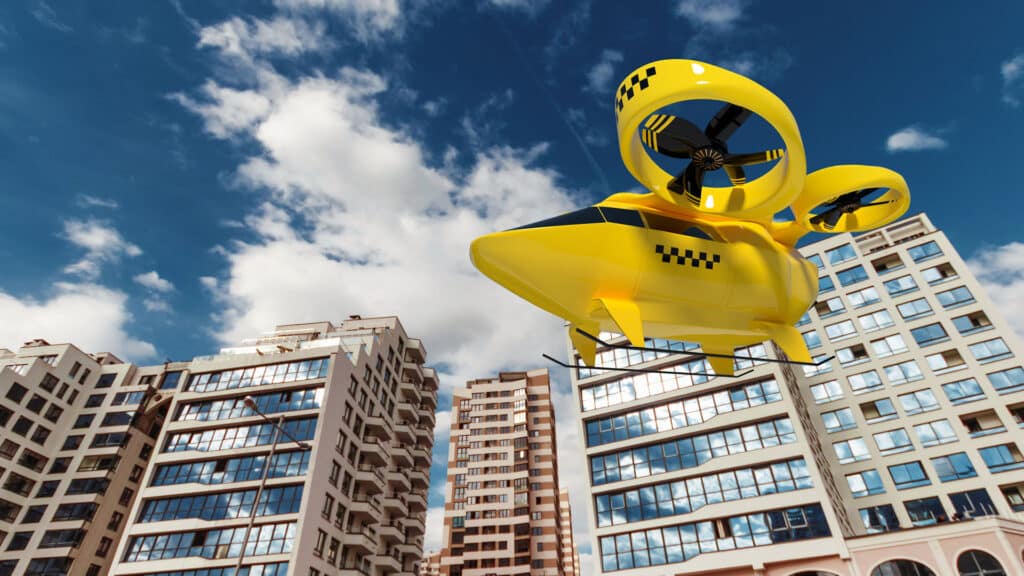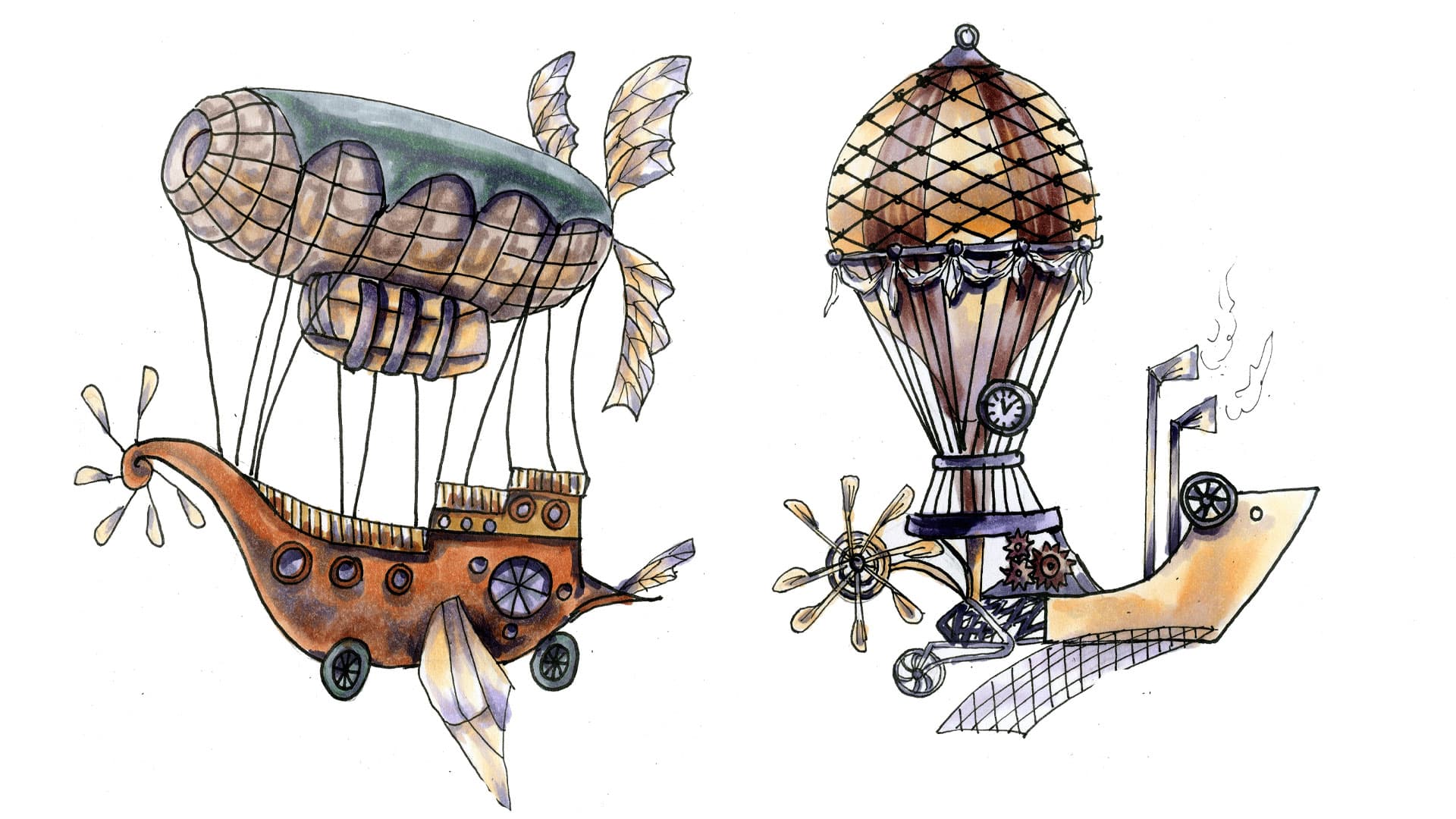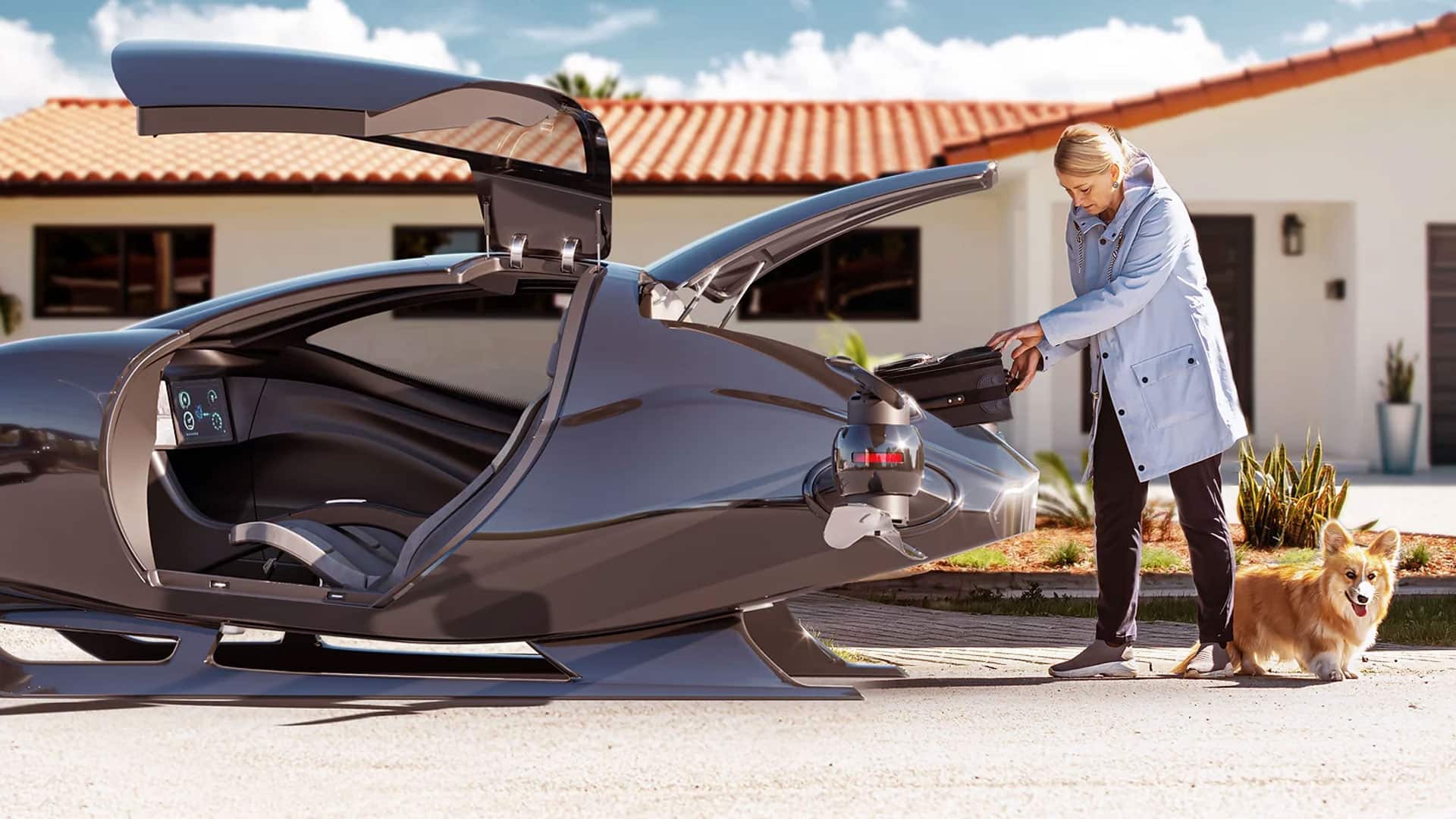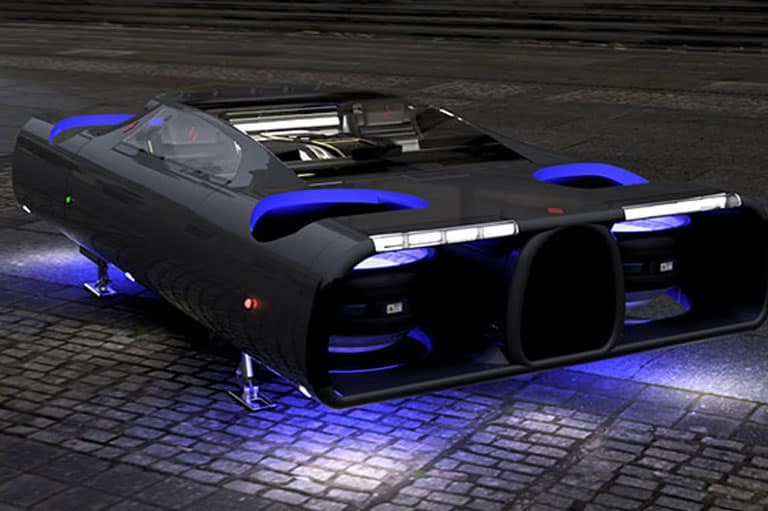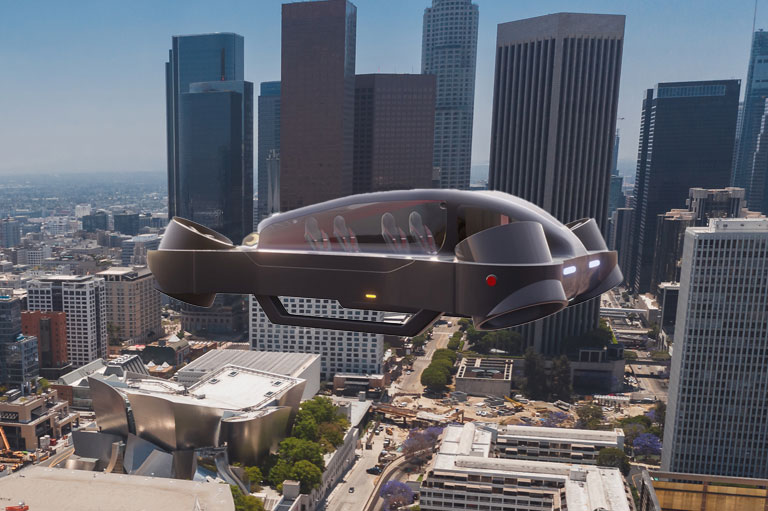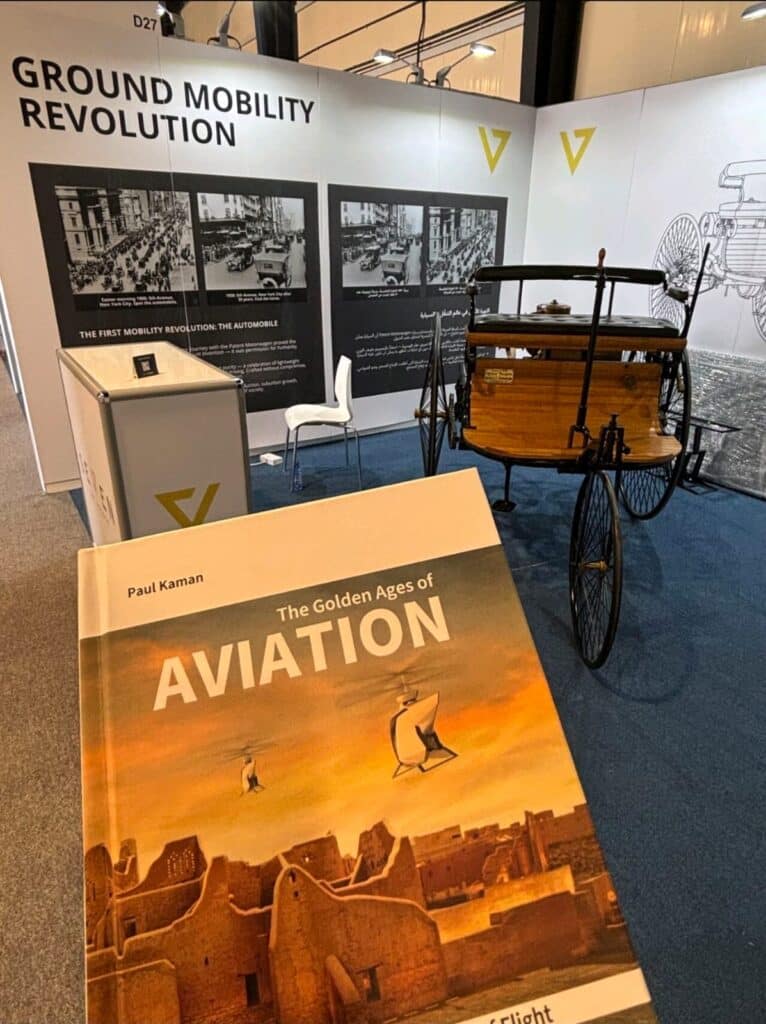
Aeroauto COO Showcases “The Golden Ages of Aviation” at International Mobility Event
Aeroauto Global is proud to highlight an extraordinary moment from this year’s mobility exhibition: our COO, Paul Kaman, presenting his new work, “The Golden Ages of Aviation“, alongside one of history’s most iconic vehicles—the Benz Patent-Motorwagen.
The photograph above captures the essence of Paul’s message. At one end stands the machine that launched the first mobility revolution. In his hands sits a book that documents every leap that brought humanity from wheels… to wings… and now to Advanced Air Mobility (AAM).
Paul’s publication, featured in our news section, traces the full arc of aviation’s rise—barnstormers, flying boats, global airmail, the Jet Age, and finally today’s awakening into electric, vertical flight. It is both a historical chronicle and a call to action: a reminder that revolutions begin with people who are willing to see possibility before the rest of the world does.
Displayed within the exhibition’s “Ground Mobility Revolution” gallery, Paul’s work bridges the story of where mobility began to where it is now headed. As AAM transforms into a global movement, Aeroauto remains committed to shaping the infrastructure, training, safety systems, and operational frameworks of the next Golden Age of Flight.

